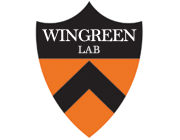A biophysical limit for quorum sensing in biofilms
Publication Year
2021
Type
Journal Article
Abstract
Bacteria grow on surfaces in complex immobile communities known as biofilms, which are composed of cells embedded in an extracellular matrix. Within biofilms, bacteria often interact with members of their own species and cooperate or compete with members of other species via quorum sensing (QS). QS is a process by which microbes produce, secrete, and subsequently detect small molecules called autoinducers (AIs) to assess their local population density. We explore the competitive advantage of QS through agent-based simulations of a spatial model in which colony expansion via extracellular matrix production provides greater access to a limiting diffusible nutrient. We note a significant difference in results based on whether AI production is constitutive or limited by nutrient availability: If AI production is constitutive, simple QS-based matrix-production strategies can be far superior to any fixed strategy. However, if AI production is limited by nutrient availability, QS-based strategies fail to provide a significant advantage over fixed strategies. To explain this dichotomy, we derive a biophysical limit for the dynamic range of nutrient-limited AI concentrations in biofilms. This range is remarkably small (less than 10-fold) for the realistic case in which a growth-limiting diffusible nutrient is taken up within a narrow active growth layer. This biophysical limit implies that for QS to be most effective in biofilms AI production should be a protected function not directly tied to metabolism.
Keywords
Computer Simulation,
Models, Biological,
Biofilms/*growth & development,
Bacteria/genetics/growth & development/*metabolism,
Bacterial Load,
Bacterial Proteins/genetics/*metabolism,
Extracellular Matrix/chemistry/*metabolism,
Nutrients/metabolism,
Quorum Sensing/*genetics,
*agent-based modeling,
*biofilms,
*nutrient-limited communication,
*quorum sensing
Journal
Proc Natl Acad Sci U S A
Volume
118
Date Published
05/2021
ISBN
0027-8424 (Print)0027-8424
Accession Number
34006640
1091-6490Narla, Avaneesh VOrcid: 0000-0002-9328-8271Borenstein, David BruceWingreen, Ned SOrcid: 0000-0001-7384-2821R01 GM082938/GM/NIGMS NIH HHS/United StatesJournal ArticleResearch Support, N.I.H., ExtramuralResearch Support, U.S. Gov't, Non-P.H.S.2021/05/20Proc Natl Acad Sci U S A. 2021 May 25;118(21):e2022818118. doi: 10.1073/pnas.2022818118.

